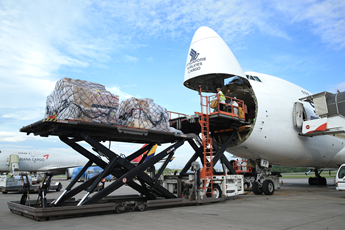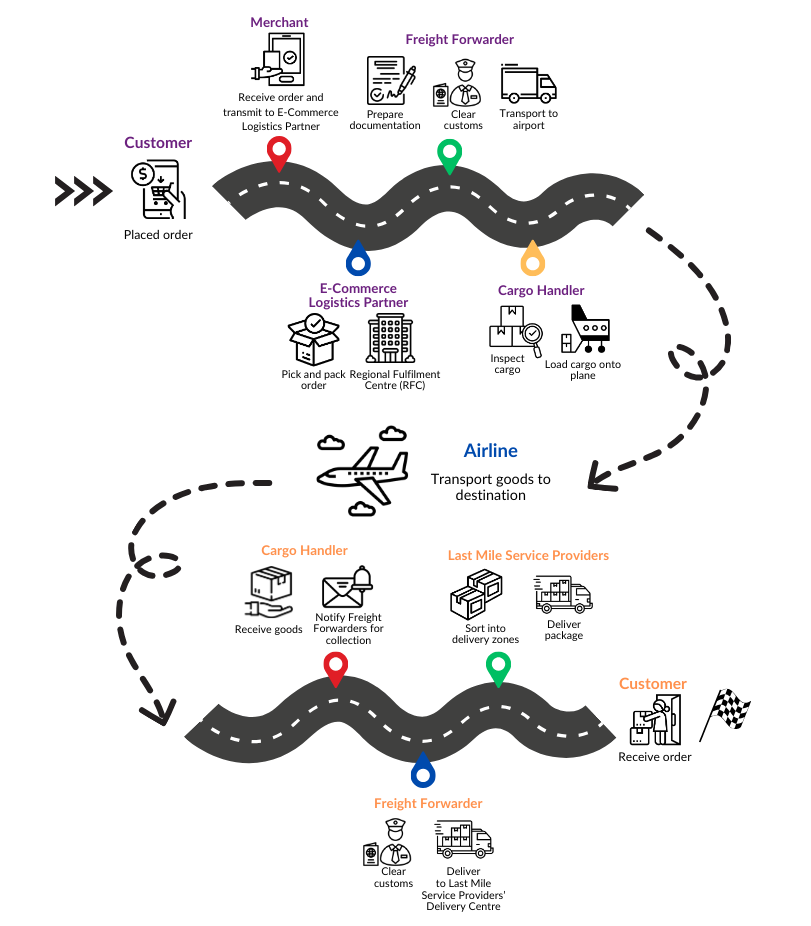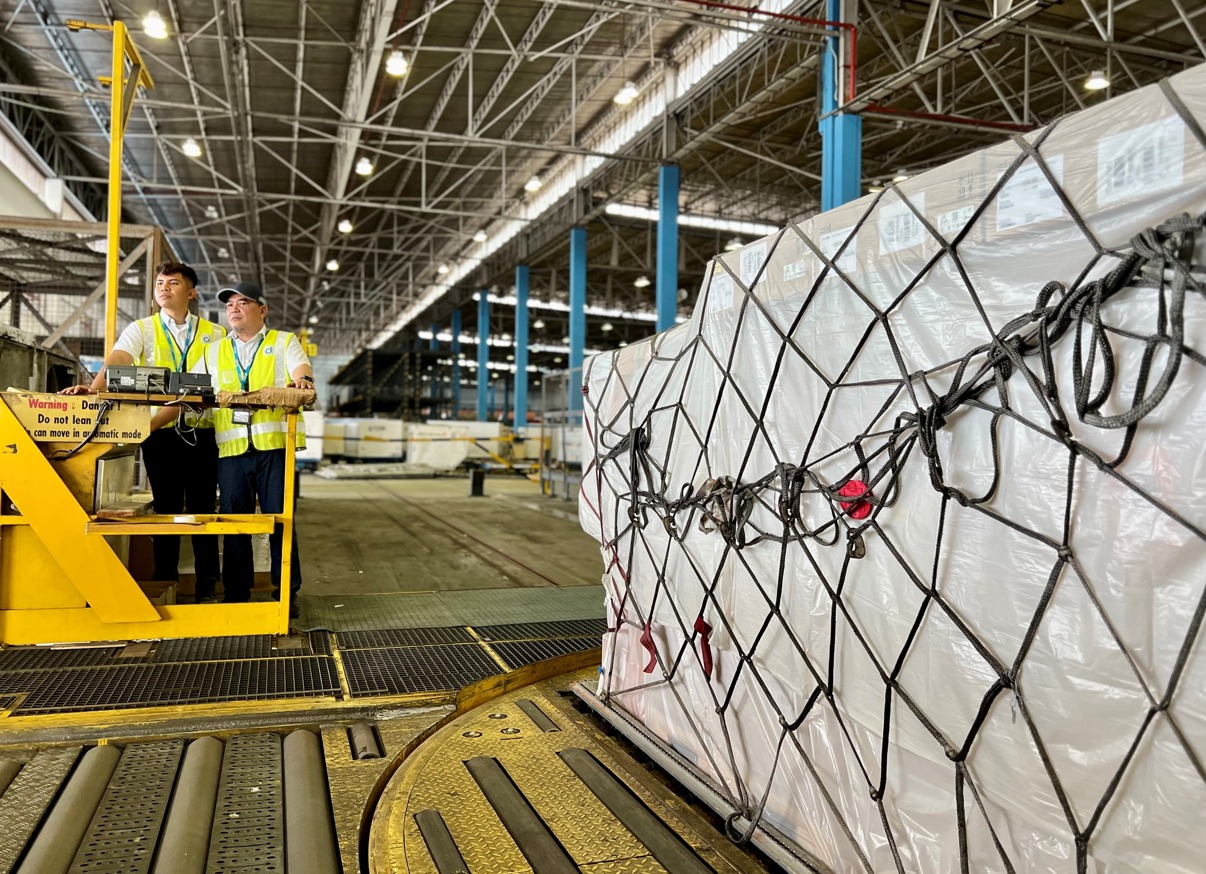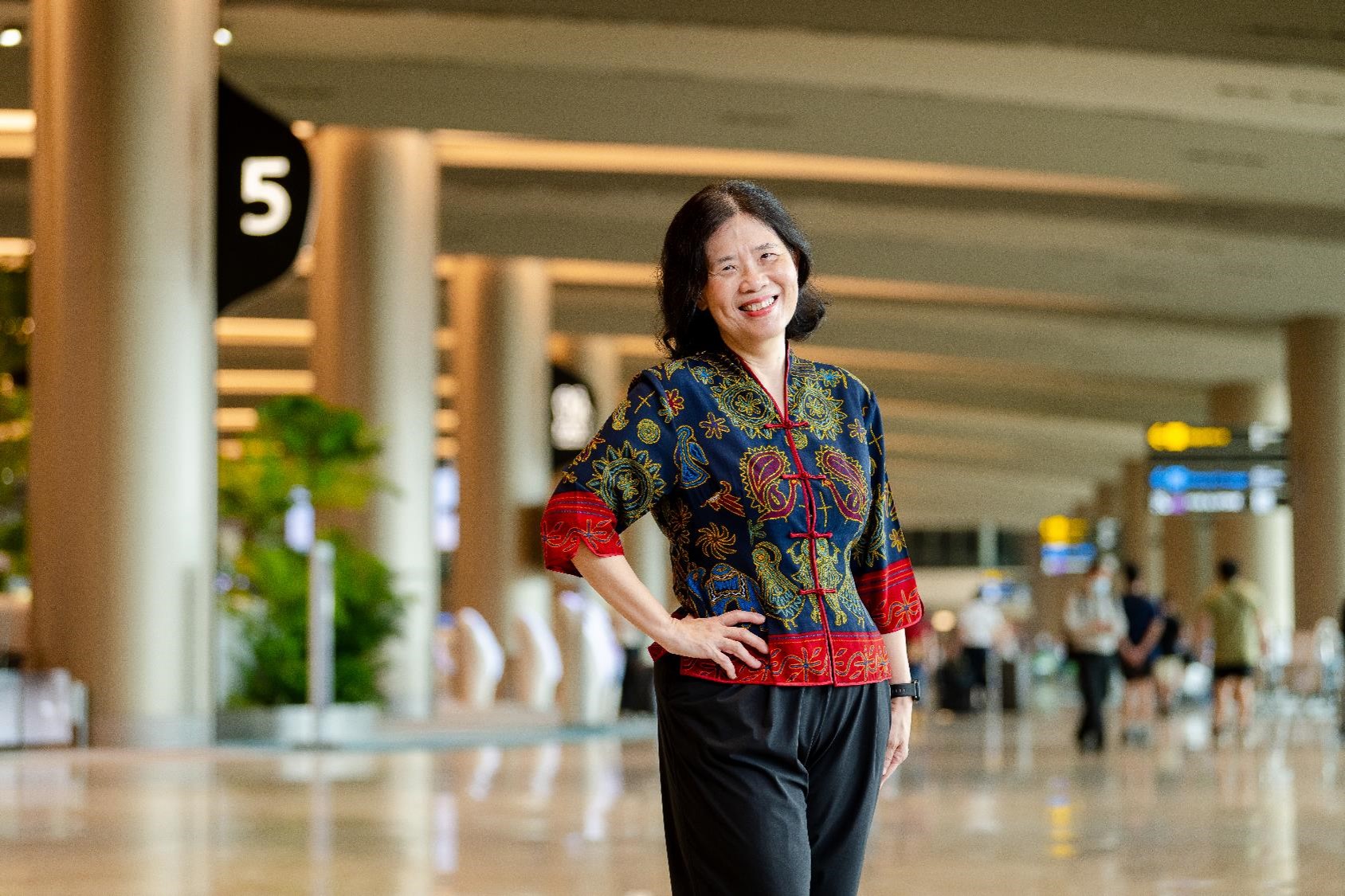T’is the season for gifting! Have you ever wondered how Christmas gifts you purchase online for your loved ones make their way to your doorstep, and how many parties are involved in processing your shipments to make sure they are delivered on time?
Well, the answer is probably more than you guessed. In fact, there are many different ways in which your online purchases from major global merchants can get transported to you. For a sneak peek into what goes on behind the scenes after you check out your cart, here’s a look at one form of B2C cross-border e-commerce supply chain via air shipment.
E-commerce is a key cargo segment at Changi Airport. Changi is connected some 150 cities in about 50 countries through close to 100 airlines. Its network and connectivity enable the transportation of your purchases to Singapore.



Cargo being handled at Changi Airport
The start of the journey – first mile transportation
Starting with the click of your mouse, your online order is transmitted to the merchant, known as the shipper in air cargo lingo, who then transmits it to its appointed e-commerce logistics provider. This logistics provider picks and packs your order at a regional fulfilment centre (RFC) in your region.
RFCs are warehouse facilities set up by large and international merchants, such as Nike and H&M, in selected countries to serve customers within a specific geographical region. This model has increasingly been adopted by merchants who have found time and cost efficiencies in doing so, due to the increase in demand for online shopping in recent years. As RFCs already hold inventory, they serve to shorten delivery time to customers. Their operations are often outsourced to an e-commerce logistics player by the merchant.
From there, the logistics provider may work with a freight forwarder, the next in line along the logistics chain, to arrange the best means of transport and route to optimise transit time and costs, to the destination. This freight forwarder can also be handling goods from multiple shippers at any point in time. This helps to lower the unit cost per shipper. It will then truck the goods to the airport and contract airlines to air freight the consolidated shipments overseas.
The freight forwarders are also responsible for preparing the documentation for the consolidated shipments – both the airway bills and customs clearance documents. An air waybill is a required shipping document for air freight containing detailed information about the shipment.
Preparing for flight
At the airport, the freight forwarder will then hand over the shipment to a cargo handler, who will conduct shipment inspection and cargo screening, before loading the goods onto the aircraft. The shipment can be transported either on cargo (also known as freighter) planes, or in the belly hold of passenger planes.



How your online purchase gets from its source to destination
Arrival and last mile transportation
Upon arrival at the destination airport, the reverse process takes place. The cargo handler unloads the shipment from the aircraft, processes the shipment, and notifies the freight forwarder for collection.



Arrival shipments being received at dnata Airfreight Terminal
Prior to the shipment collection, the freight forwarder has to seek customs clearance on the shipment from the local customs authority. The freight forwarder then delivers the shipment to an appointed last mile service provider at their local delivery centre for further sorting according to delivery zones. The goods will be sent out to individual consumers thereafter.
All in all, there are likely to have been at least eight parties who have worked on transporting those Christmas gifts of yours to your doorstep!
As more turn to online shopping, McKinsey predicts that the size of the Southeast Asian e-commerce market will triple and grow at a CAGR of 22% from now to 2026.
As part of the Changi community’s efforts to improve our e-commerce handling capabilities, SATS and SingPost inked an MOU in July 2023 to explore the development of an advanced eCommerce transshipment hub in Changi Airport. The aim of the hub is to streamline cargo workflows, shorten delivery times, and reduce operating costs and manpower, enhancing the competitiveness of the Changi air cargo hub.
Other Articles
.jpg)
A peek into the world of Changi’s baggage handling systems
Go behind-the-scenes for an exclusive look at where bags are stored before one’s flight, and the unseen systems that transport thousands of bags daily across Changi Airport.

The Making of ‘The Wonderfall’ and ‘Dreamscape’
Find out how T2’s newest digital installations were created.

On LinkedIn@ChangiAirport
Changi Service Ambassadors come from varied backgrounds and share a common motivation of wanting to give back to society. Hear how these volunteers make a difference to the lives of passengers.


